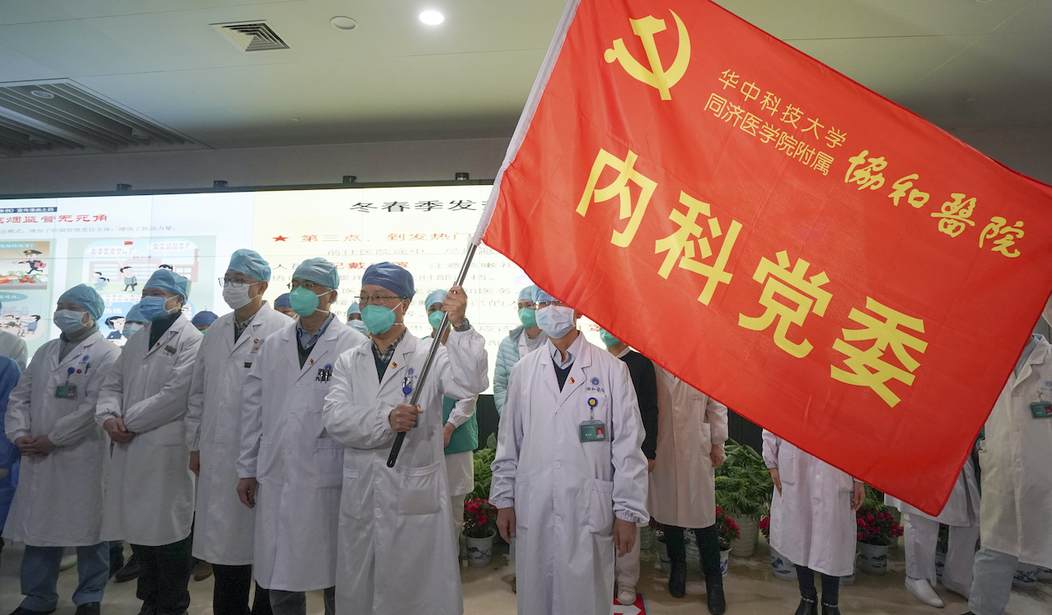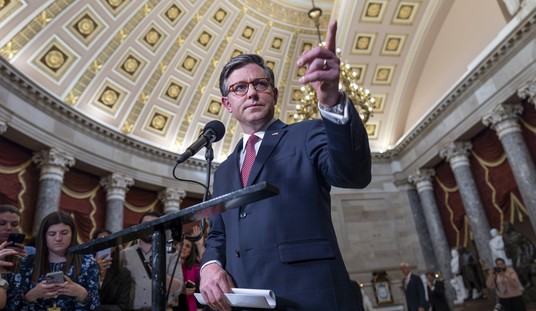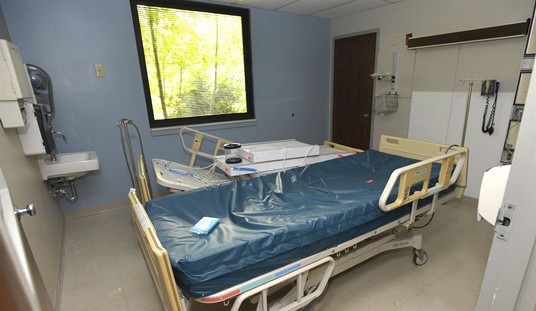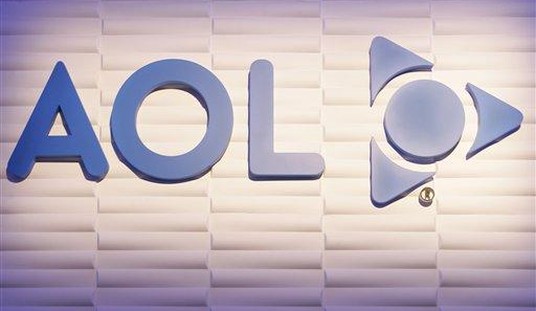
In this Jan. 22, 2020, photo released on Thursday, Jan. 23, 2020, by China’s Xinhua News Agency, medical workers of the Union Hospital with the Tongji Medical College of the Huazhong University of Science and Technology in Wuhan participate in a ceremony to form an “assault team” to battle against a coronavirus epidemic in Wuhan in central China’s Hubei Province, Jan. 23, 2020. China closed off a city of more than 11 million people Thursday in an unprecedented effort to try to contain a deadly new viral illness that has sickened hundreds and spread to other cities and countries in the Lunar New Year travel rush. (Cheng Min/Xinhua via AP)
Earlier this month, Zhao Lijian, a spokesman for China’s Ministry of Foreign Affairs, tried to advance the conspiracy theory that the Coronavirus was brought to Wuhan by the U.S. Army when 300 soldiers traveled there in mid-October for the Military World Games. On March 12, Zhao sent the following tweets:
This article is very much important to each and every one of us. Please read and retweet it. COVID-19: Further Evidence that the Virus Originated in the US.
CDC was caught on the spot. When did patient zero begin in US? How many people are infected? What are the names of the hospitals? It might be US army who brought the epidemic to Wuhan. Be transparent! Make public your data! US owe us an explanation!
These accusations began following a February press conference held by Chinese respiratory specialist Zhong Nanshan. He told reporters that, “Though the COVID-19 was first discovered in China, it does not mean that it originated from China.” That opened the door for men like Zhao to start spinning their tales.
These wild allegations had been circulating on Weibo, which is a popular Chinese social media platform. It’s likely that some Chinese people believe them. The smarter ones, who know what their government is capable of, probably don’t. But, they go along with it because those who speak the truth in China have a funny way of disappearing.
Anyway, the next morning, US Assistant Secretary of State David Stilwell summoned China’s ambassador, Cui Tiankai, to the State Department to discuss his country’s “blatant, global disinformation campaign.”
A senior State Department official told CNN that Stilwell gave a very “stern representation” of the facts to the Chinese ambassador, who was “very defensive.” The official added, “the State Department believes that China is seeking to deflect criticism for its role in “starting a global pandemic and not telling the world.”
Either Ambassador Cui never believed the propaganda or else he had a change of heart following his meeting with Stilwell. Because, according to Bloomberg News, “an unusual public spat” has opened up between Cui and Zhao Lijian over where and how the virus originated.
In an interview with “Axios on HBO,” Cui “reaffirmed his opposition to promoting theories that the virus that causes COVID-19 originated in an American military lab and said he stood by his Feb. 9 statement that it would be “crazy” to spread such theories, even though a foreign ministry spokesman has repeatedly floated the idea on Twitter in recent weeks.”
Cui told Axios, “Such speculation will help nobody. It’s very harmful. Eventually, we must have an answer to where the virus originally came from. But this is the job for the scientists to do, not for diplomats.”
When Axios questioned Cui about some derogatory comments Zhao had made over the weekend, he replied, “Maybe you could go and ask him. I’m here representing my head of the state and my government.”
Bloomberg’s Peter Martin notes that “Cui’s comments represent a sharp public rebuke to foreign ministry spokesman Zhao Lijian. Such public differences are rare among Chinese officials who are famous for their ability to stick closely to the Communist Party’s official line. The developments suggest that China’s foreign ministry may be having second thoughts about taking a more confrontational approach toward President Donald Trump.”
(Note: Cui is appointed directly by Xi and holds a vice-ministerial rank in China’s political hierarchy, two levels senior to Zhao.)
The article discusses the Chinese government’s “strategy of strategic composure that sought to avoid escalating disputes with Trump” throughout their trade negotiations with the U.S. At a certain point, Zhao started becoming more aggressive in his rhetoric which, from what I understand, is normal behavior for him.
Martin explains:
While serving as deputy chief of mission at China’s Islamabad embassy last year, Zhao criticized American racial divides in a string of tweets, prompting former U.S. National Security Adviser Susan Rice to call him a “racist disgrace.”
Such rhetoric has prompted a debate among Chinese diplomats. One official said that Zhao’s approach had been vocally welcomed by many inside the foreign ministry. Another expressed relief that Cui had disowned Zhao’s “dangerous” remarks.
Someone obviously spoke to Zhao because by Monday afternoon, “he struck a more conciliatory tone, posting a tweet with photos of cherry blossoms and a plea to “unite to deal with the epidemic.” Meanwhile, Hu Xijin, the outspoken editor of the party’s Global Times newspaper, wrote that “whoever stirs up conflict between China and the US will be condemned by history.”
When asked about the dispute which had arisen between Ambassador Cui and Zhao, another Ministry spokesman said, “The origin of the Coronavirus is a matter of science that requires scientific and professional assessment. All countries need to work together to fight the disease. Trying to shift the blame at this particular time will not help in combating the epidemic at home or help the international response.”
While it’s great that Zhao has backed off from spreading his wild conspiracy theory, all of them, including the ambassador, are acting as if the origin of the Coronavirus remains a mystery to be solved at a later date.
There is no question where the Coronavirus originated. It originated in Wuhan, China.














Join the conversation as a VIP Member